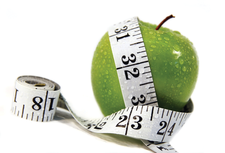Optimize SVG files for websites
Slimming Down

© Lead Image © Sandra Cunningham, Fotolia.com
Inkscape creates W3C-compliant SVG files, but they are usually larger than they need to be for the web. We'll show you how to optimize SVG files for faster load times.
Graphic images can give a website clarity and visual interest, but the web designer must contend with the tax that heavy graphic images place on bandwidth and load time. Photo images are typically scaled down to a lower resolution (and smaller file size) to run on the web, and for other types of image files, smaller is also almost always better.
One way to reduce the size of web images is to rely on vector graphics whenever possible. The Scalable Vector Graphics (SVG) format was originally developed for use on the Internet. Although SVG typically leads to significant economies of scale when compared to pixel graphics, it has taken decades for web developers to become reasonably comfortable with it.
The most popular tool for vector graphics on Linux is Inkscape. You can certainly save some kilobytes by generating graphics files with Inkscape rather than an alternative raster graphics tool like Gimp. But using Inkscape doesn't mean your files will automatically be optimized for the web. This article highlights some steps you can take to reduce the size of vector graphics image files.
[...]
Buy this article as PDF
(incl. VAT)
Buy Linux Magazine
Subscribe to our Linux Newsletters
Find Linux and Open Source Jobs
Subscribe to our ADMIN Newsletters
Support Our Work
Linux Magazine content is made possible with support from readers like you. Please consider contributing when you’ve found an article to be beneficial.

News
-
Parrot OS Switches to KDE Plasma Desktop
Yet another distro is making the move to the KDE Plasma desktop.
-
TUXEDO Announces Gemini 17
TUXEDO Computers has released the fourth generation of its Gemini laptop with plenty of updates.
-
Two New Distros Adopt Enlightenment
MX Moksha and AV Linux 25 join ranks with Bodhi Linux and embrace the Enlightenment desktop.
-
Solus Linux 4.8 Removes Python 2
Solus Linux 4.8 has been released with the latest Linux kernel, updated desktops, and a key removal.
-
Zorin OS 18 Hits over a Million Downloads
If you doubt Linux isn't gaining popularity, you only have to look at Zorin OS's download numbers.
-
TUXEDO Computers Scraps Snapdragon X1E-Based Laptop
Due to issues with a Snapdragon CPU, TUXEDO Computers has cancelled its plans to release a laptop based on this elite hardware.
-
Debian Unleashes Debian Libre Live
Debian Libre Live keeps your machine free of proprietary software.
-
Valve Announces Pending Release of Steam Machine
Shout it to the heavens: Steam Machine, powered by Linux, is set to arrive in 2026.
-
Happy Birthday, ADMIN Magazine!
ADMIN is celebrating its 15th anniversary with issue #90.
-
Another Linux Malware Discovered
Russian hackers use Hyper-V to hide malware within Linux virtual machines.

